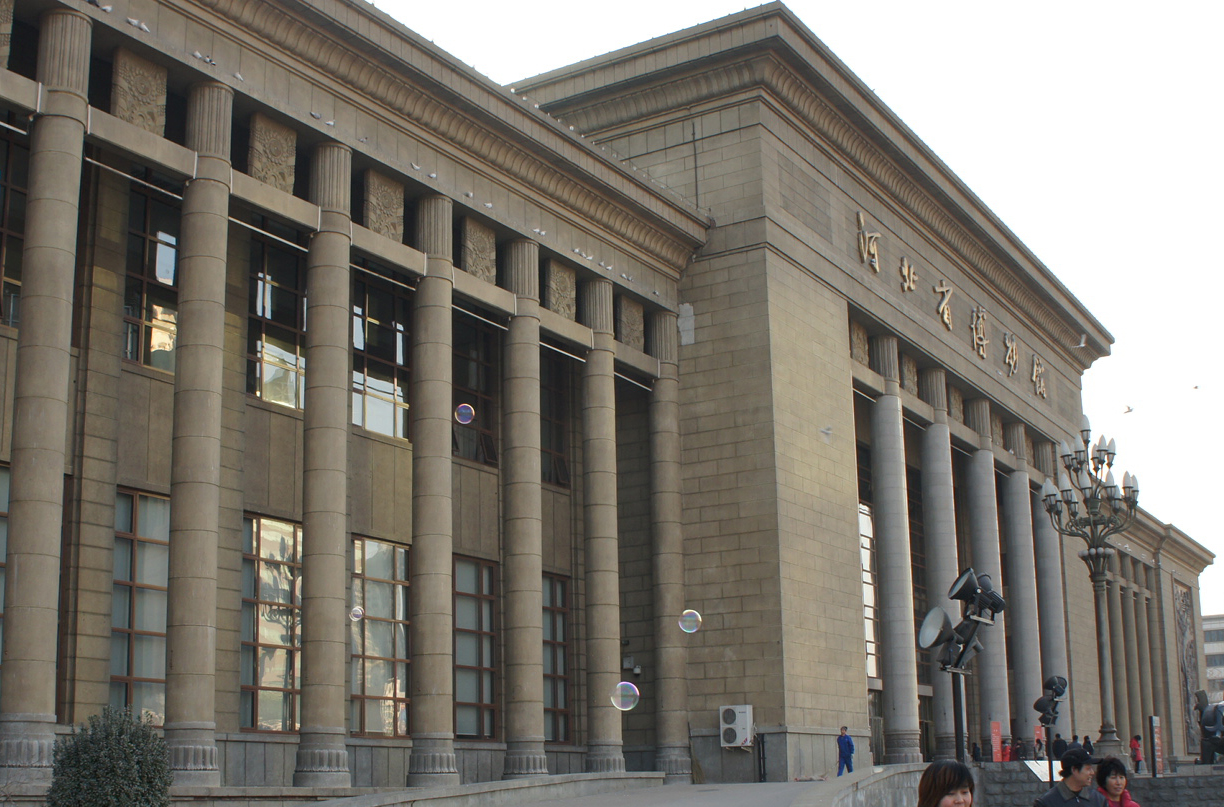Hebei Provincial Museum on:
[Wikipedia]
[Google]
[Amazon]
 The Hebei Museum () is located in Shijiazhuang, the capital city of
The Hebei Museum () is located in Shijiazhuang, the capital city of
File:Jin Lv Yu Yi of Liusheng, Han Dynasty,China (Hebei Museum).jpg, Jade burial suit, c. 113 BCE, from the tomb of Liu Sheng
File:Boshan Burner Inlaid with Gold.jpg,
 The Hebei Museum () is located in Shijiazhuang, the capital city of
The Hebei Museum () is located in Shijiazhuang, the capital city of Hebei
Hebei or , (; alternately Hopeh) is a northern province of China. Hebei is China's sixth most populous province, with over 75 million people. Shijiazhuang is the capital city. The province is 96% Han Chinese, 3% Manchu, 0.8% Hui, and 0 ...
Province, China. It first opened in April 1953 in Baoding
Baoding (), formerly known as Baozhou and Qingyuan, is a prefecture-level city in central Hebei province, approximately southwest of Beijing. As of the 2010 census, Baoding City had 11,194,382 inhabitants out of which 2,176,857 lived in the b ...
. After moving twice in the 1980s, it reopened in October 1987 at its present location on South Zhongshan Street. As the only provincial-level museum in Hebei, its primary function is the collection and exhibition of ancient cultural relics.
Artifacts
The museum's exhibition area has an area of approximately and showcases nearly 150,000 cultural relics. Artifacts in their collection include theWestern Han
The Han dynasty (, ; ) was an imperial dynasty of China (202 BC – 9 AD, 25–220 AD), established by Liu Bang (Emperor Gao) and ruled by the House of Liu. The dynasty was preceded by the short-lived Qin dynasty (221–207 BC) and a war ...
jade burial suits sewn with gold thread from the Mancheng tombs of Liu Sheng and his wife Dou Wan
Dou Wan () was a Western Han noblewoman married to Liu Sheng, Prince of Zhongshan, a brother of Emperor Wu of Han. Her tomb was discovered in Mancheng County, and many of her burial goods, including her jade burial suit, have been declared nati ...
; the Changxin Palace lantern, also from the tomb of Dou Wan; and a 2300-year-old bronze lamp, found in the tomb of King Cuo of Zhongshan
King Cuo of Zhongshan (reigned 327–309 BC) was the fifth ruler of the state of Zhongshan during the Warring States period in ancient China. He reigned for 15 years. In 323 BC, he styled himself "king" along with the rulers of Han, Wei, Yan ...
.
Hill censer
The hill censer or ''boshanlu'' (博山爐 "universal mountain censer" or ''boshan xianglu'' 博山香爐) is a type of Chinese censer used for burning incense. Hill censers first start appearing in tombs dating to the Western Han (202 BCE – 23 ...
, height 26 mm, from the tomb of Liu Sheng
File:长信宫灯 河北博物院.jpg, The Changxin Palace lantern, c. 172 BCE, from the tomb of Dou Wan
File:铜朱雀衔环杯.jpg, Bronze cups with a vermilion bird
The Vermilion Bird ( zh, c=朱雀, p=Zhūquè) is one of the Four Symbols of the Chinese constellations
Traditional Chinese astronomy has a system of dividing the celestial sphere into asterisms or constellations, known as "officials" ( C ...
holding a jade ring in its mouth, Western Han
The Han dynasty (, ; ) was an imperial dynasty of China (202 BC – 9 AD, 25–220 AD), established by Liu Bang (Emperor Gao) and ruled by the House of Liu. The dynasty was preceded by the short-lived Qin dynasty (221–207 BC) and a war ...
, from the tomb of Dou Wan
File:青花釉里红开光贴花盖罐.jpg, Yuan dynasty
The Yuan dynasty (), officially the Great Yuan (; xng, , , literally "Great Yuan State"), was a Mongol-led imperial dynasty of China and a successor state to the Mongol Empire after its division. It was established by Kublai, the fift ...
blue and white pottery
"Blue and white pottery" () covers a wide range of white pottery and porcelain decorated under the glaze with a blue pigment, generally cobalt oxide. The decoration is commonly applied by hand, originally by brush painting, but nowadays by s ...
decorated in fretwork floral designs (lotus petals, grasses, and peonies) in blue and red glaze with a lion finial on the lid
Visitor information
Hebei Museum is open Tuesday until Sunday, from 9:00 AM to 5:00 PM. Entrance is free with valid proof of identification.See also
* List of museums in ChinaReferences
{{Hebei topics Museums established in 1953 Museums in Hebei 1953 establishments in China Buildings and structures in Shijiazhuang National first-grade museums of China